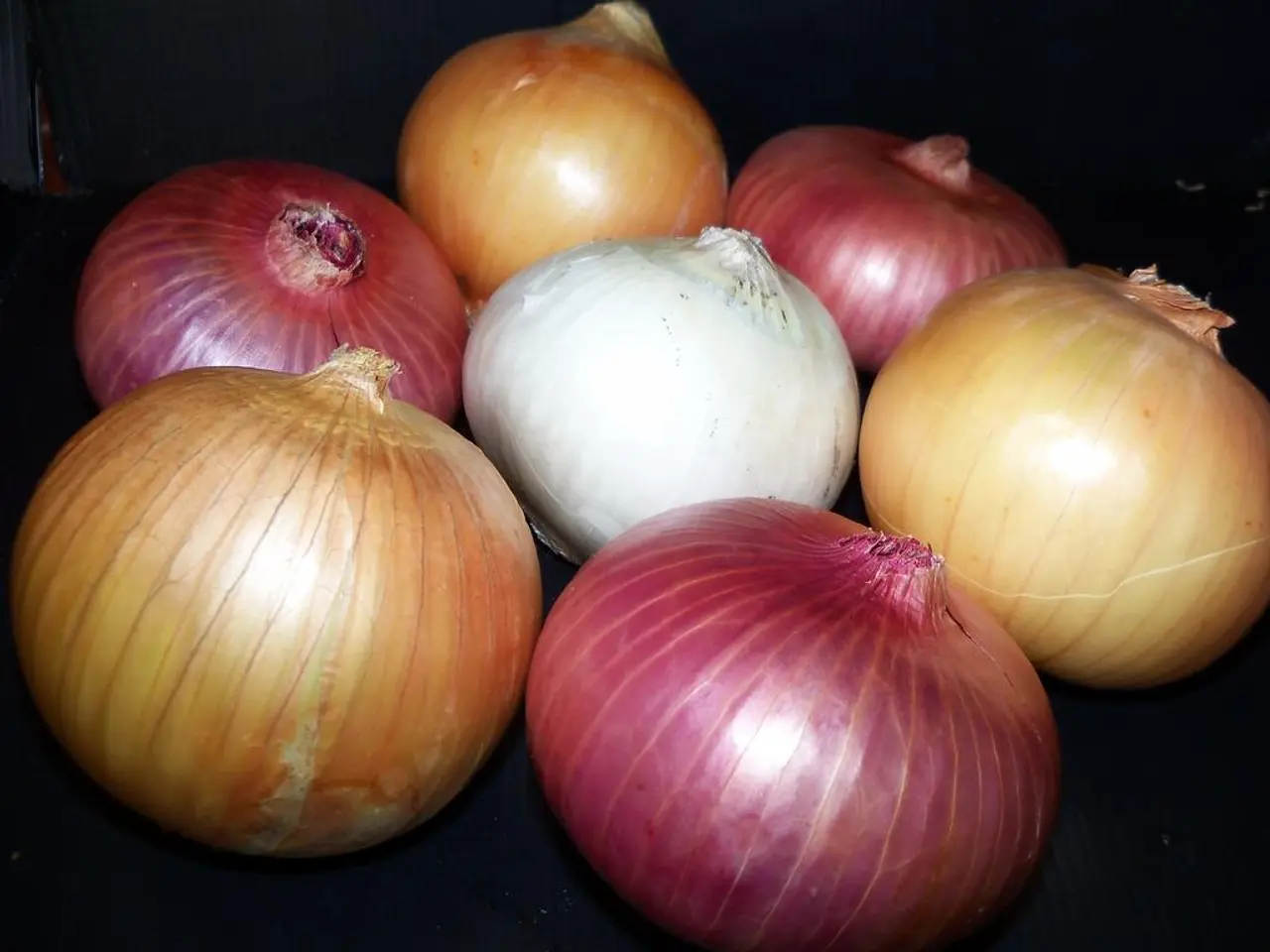Garlic Planting Schedule in Zone 6a: Ideal Time and Practical Tips for Successful Growth
In Zone 6A, the fall season is the perfect time to plant garlic. This hardy vegetable thrives in well-drained soil rich in organic matter, with a pH between 6.0 and 7.0[1][3][5]. Here's a step-by-step guide on how to plant garlic in Zone 6A for a bountiful harvest.
Choosing the Right Garlic
Hardneck garlic varieties like Rocambole are preferred for their robust flavor and easier peeling[4]. When sourcing garlic cloves, it's essential to choose clean seed stock from reputable suppliers to ensure healthy plants[6].
Preparing the Soil
Before planting, prepare the soil by adding compost and well-rotted manure. This enriches the soil, improves its structure, and provides essential nutrients for the growing garlic[2]. In Zone 6A, adding these organic materials is particularly beneficial, as it enhances the soil's ability to withstand cold temperatures[5].
Planting Techniques
Choose a full sun location with at least 6-8 hours of direct sunlight daily. Break garlic bulbs into individual cloves just before planting; do not wash or peel them. Plant the cloves pointed side up, 2 inches deep, and 4-6 inches apart in the well-prepared soil[1][3][5]. Planting in raised beds provides better drainage and root development.
Protecting Your Garlic
Mulching with 4-6 inches of straw or shredded leaves helps protect garlic through winter by regulating soil temperature, retaining moisture, and reducing weed growth[1][5]. During cold snaps, mulching can help mitigate the effects of frost.
Post-Planting Care
Avoid waterlogged soil to prevent rot. Weeding is vital to prevent pests and diseases and to minimize competition for nutrients. Common pests and diseases that can affect garlic plants include thrips and white rot[7].
Harvesting and Curing
Garlic is typically ready to harvest when about one-third of the green tops have died back but before they have completely yellowed or dried, usually from late spring to early summer depending on planting time[2][4]. Harvest during a dry period by gently lifting bulbs with a fork, avoiding pulling by the tops.
After harvest, cure garlic by drying in a well-ventilated, shaded area for about two weeks. Store cured garlic by hanging braided tops or placing bulbs on racks in a cool, dry, and dark place[2].
Additional Tips
Monitor the moisture levels in your garlic bed. Water if the soil dries out during winter or spring, but avoid overwatering. Keep garlic beds weed-free to reduce competition and improve bulb size[1][2].
In summary, plant hardneck garlic in Zone 6A in fall 4-6 weeks before frost, in full sun and well-drained soil, protect with mulch over winter, and harvest when the tops start to die back but are not fully dry, then cure and store properly for best results. Happy gardening!
References: [1] Gardening Know How. (2021). How to Grow Garlic in the Garden. Retrieved from https://www.gardeningknowhow.com/edible/bulbs/garlic/growing-garlic.htm [2] The Spruce Eats. (2021). How to Grow Garlic: A Complete Guide. Retrieved from https://www.thespruceeats.com/how-to-grow-garlic-1467061 [3] Almanac.com. (2021). How to Grow Garlic. Retrieved from https://www.almanac.com/plant/garlic [4] The Kitchn. (2021). How to Grow Garlic: A Comprehensive Guide. Retrieved from https://www.thekitchn.com/how-to-grow-garlic-a-comprehensive-guide-221298 [5] Burpee. (2021). How to Grow Garlic. Retrieved from https://www.burpee.com/learn/edibles/vegetables/alliums/garlic/how-to-grow-garlic [6] The Garlic Farm. (2021). Choosing Garlic Varieties for Planting. Retrieved from https://www.garlicfarm.co.uk/choosing-garlic-varieties-for-planting/ [7] The Spruce Eats. (2021). Common Garlic Pests and Diseases. Retrieved from https://www.thespruceeats.com/common-garlic-pests-and-diseases-1467060
- Tending to a home-and-garden in Zone 6A, one might consider incorporating garlic into the lifestyle, as it thrives during the fall season and can be planted for a bountiful harvest.
- For a successful garlic garden, it's crucial to choose hardneck garlic varieties with robust flavor, such as Rocambole, and ensure clean seed stock for healthy plants, making gardening a delightful and rewarding experience.



